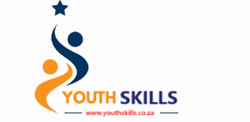A Digital Pathway for Ambitious Young Minds
Not long ago, finding a stable career meant following a traditional path—finish school, maybe go to college, and then search for work. But the world has changed. Technology has become the heartbeat of the modern economy, and the demand for digital skills is higher than ever. For many young South Africans, a Youth Skills Computer Learnerships programme is becoming the bridge between ambition and opportunity.
This isn’t just another training course. It’s a structured journey that blends theory with practical, hands-on learning—equipping you with the exact skills employers are searching for.
Understanding the Computer Learnership Journey
What Makes a Learnership Unique
A computer learnership is not simply “going to class.” It’s a government-recognised, work-based training programme, often funded by Sector Education and Training Authorities (SETAs) under the National Qualifications Framework (NQF).
In practice, it’s a two-fold experience:
- Classroom Learning – You gain theoretical knowledge in subjects like programming, IT support, or network security.
- On-the-Job Training – You apply that knowledge directly in a workplace setting, building real skills that go beyond textbooks.
Think of it as an apprenticeship for the digital era—where your classroom is half lecture hall, half real office environment.
Why These Programmes Matter
A Real Solution to the Skills Gap
Employers often say that graduates lack workplace-ready skills. Computer learnerships fix this problem by combining learning with actual job experience, ensuring that when you finish, you’re ready to contribute from day one.
Benefits You Can Count On
- Recognised Qualification – Earn an NQF-level certificate that proves your competence.
- Practical Experience – Get the kind of on-site training that employers value.
- COMPLETE APPLICATION FORM
- Increased Employability – Many learners receive permanent offers after completing their programmes.
- Soft Skills Development – Communication, teamwork, and problem-solving become part of your daily routine.
The Many Faces of Computer Learnerships
Technology is a broad field, and so are the options for learners. Some of the most in-demand learnership streams include:
- IT Support – Troubleshooting, hardware repair, and user assistance.
- Software Development – Coding, application design, and testing.
- Network Administration – Setting up and maintaining company networks.
- Data Analysis – Interpreting and visualising data for business insights.
- Cybersecurity – Protecting systems from online threats.
Each path prepares you for specific roles, allowing you to choose the one that fits your interest and career vision.
How to Qualify and Apply
Meeting the Requirements
While specific entry criteria vary, most computer learnerships require you to:
- Be between 18 and 34 years old.
- Have completed Grade 12, preferably with strong results in Mathematics, Science, or Computer Applications Technology.
- Be a South African citizen or legal resident.
- Be unemployed at the time of application.
- Sometimes pass a basic computer skills test.
Crafting an Application That Stands Out
A winning application includes:
- A concise CV highlighting any tech exposure (even if it’s informal).
- A clear cover letter explaining why you want to build a career in technology.
- Evidence of commitment—short courses, volunteer work, or personal projects related to IT.
Employers and training providers look for more than grades—they want passion, persistence, and a willingness to learn.
Inside the Selection Process
Once you’ve applied, you may face:
- Application screening to check your eligibility.
- Aptitude tests to assess logical thinking and problem-solving.
- Interviews where you explain your motivation and interest in the tech field.
- Psychometric assessments to gauge workplace compatibility.
The best preparation? Know your story, understand the role you want, and be confident about your future goals.
Skills You’ll Walk Away With
Technical Know-How
Depending on your programme, you could graduate with skills such as:
- Installing and troubleshooting operating systems.
- Understanding programming basics (Python, Java, or C#).
- Setting up and managing networks.
- Using database tools like SQL.
- Applying cybersecurity measures to protect sensitive data.
- Mastering Microsoft Office and other productivity software.
Soft Skills That Employers Value
- Problem-solving under real-world constraints.
- Time management in a busy workplace.
- Teamwork with diverse colleagues.
- Adaptability to new technologies.
- Professional communication in both written and spoken form.
Industry-Recognised Certifications
Many programmes also include the chance to earn credentials that are respected internationally, such as:
- CompTIA A+ or Network+ (IT support and networking)
- Microsoft Certified Solutions Associate (MCSA)
- Cisco Certified Network Associate (CCNA)
- AWS Certified Cloud Practitioner
These certifications act as “proof badges” for your technical abilities, making you more competitive in the job market.
From Learner to Employee
Your First Steps After Graduation
Completing a learnership can open doors to roles like:
- IT Support Technician
- Junior Software Developer
- Network Assistant
- Data Capture Specialist
- Cybersecurity Analyst (entry level)
Employers appreciate candidates who already understand workplace demands, making your transition smoother.
The Power of Continuous Learning
Technology evolves fast—what’s cutting-edge today may be outdated tomorrow. A learnership teaches you not only specific skills, but also how to keep learning. Many graduates go on to:
- Complete advanced certifications.
- Specialise in high-growth areas like cloud computing or artificial intelligence.
- Pursue diplomas or degrees in computer science or information systems.
Stories That Inspire
From No Experience to IT Technician
Sipho, 22, joined an IT support learnership after finishing matric but struggling to find work. Within a year, he was permanently employed by the company that hosted his training, supporting over 200 employees’ computer needs.
Coding Her Way Into a Career
Thandi, 25, entered a software development learnership with no prior programming experience. By the end, she had built her own mobile app and now works as a junior developer for a Johannesburg tech start-up.
How to Find the Right Learnership
Where to Search
- Government Programmes – Check MICT SETA’s official announcements.
- Corporate Social Investment Initiatives – Many tech companies run learnerships as part of community development.
- Training Providers – Accredited private institutions often partner with employers.
- Online Job Boards – Search terms like “youth computer learnership”.
Networking Your Way In
- Attend career fairs.
- Connect with IT professionals on LinkedIn.
- Join online groups focused on youth employment and skills training.
Choosing Quality Over Quantity
Before committing, check:
- The provider’s accreditation.
- Reviews from past learners.
- The relevance of the curriculum.
- Job placement rates after completion.
The Bigger Picture
Computer learnerships are more than a training programme—they’re a launchpad. They give you a qualification, practical experience, industry connections, and the confidence to thrive in a digital world.
In a country where unemployment is a major challenge, especially among youth, these programmes are helping to reshape futures. They turn raw potential into employable talent, and ambition into tangible results.
Final Thought:
If you’re between jobs, fresh out of school, or simply ready to switch into a future-proof career, a computer learnership could be your golden ticket. With the right mix of determination and guidance, you can unlock opportunities that not only change your career—but change your life.

